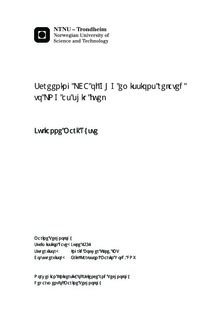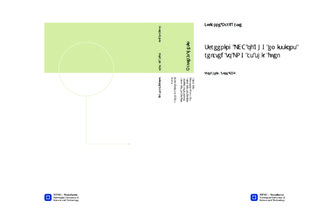| dc.description.abstract | In view of the increasingly popular climate change debate worldwide, maritime transport is under pressure to create sustainable solutions for a cleaner future.One of these solutions is using liquefied natural gas (LNG) as ship fuel. LNG has a higher hydrogen-to-carbon ratio compared with oil-based fuels, which results in lower specific CO2 emissions (kg CO2/kg fuel). Other benefits of LNG are the total elimination of SOx emissions and particulate matter, and 85-90 % reductions in NOx emissions. DNV has estimated a net global warming benefit of 15 % with the use of LNG. However there is still a need to map the greenhouse gas emissions throughout the life cycle of LNG. This thesis is a Screening Life Cycle Assessment of LNG as fuel, with the main objective to carry out a life cycle analysis of the process Bunkering of LNG . Screening is a simplified LCA which aims at identifying the important parts of a life cycle, or so-called hotspots. Bunkering of LNG and the bunkering facility have been chosen as the hotspots in this analysis for their uniqueness. The processes related to bunkering have not been analysed at this level of detail in published literature. The LCA software GaBi Educational has been used to implement the bunkering model and analyse the life cycle inventory results. Processes related to energy use, manufacturing and direct emissions were included in the GaBi model. The CML 2001 method was used to assess the Global Warming Potential (GWP). This is the main characterisation factor of the environmental issue climate change, which was in focus in this analysis.The impact assessment showed that emissions related to manufacturing are the greatest contributors to the GWP, with a total GWP of 75 917 [kg CO2-Equiv]. Energy use contributes the least, with only 0,36 of the total impact, which is considered negligible. Direct emissions stand for 7 777 [kg CO2-Equiv] and is the only area of the bunkering life cycle where emissions can be considerably reduced. In fact, all direct emissions can be omitted by the use of BOG recovery strategies, such as vapour return. The conclusion drawn is that the emissions associated with bunkering of LNG is perhaps not the main issue. A more pressing issue at the moment is the low fuelling possibilities for LNG. If LNG is to become the fuel of the future, fuelling must be made more accessible and available. | nb_NO |

